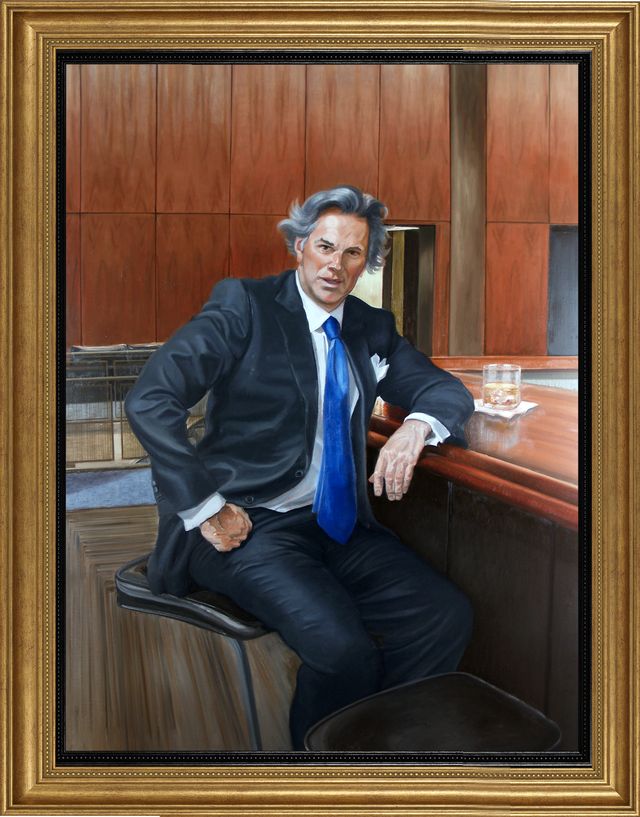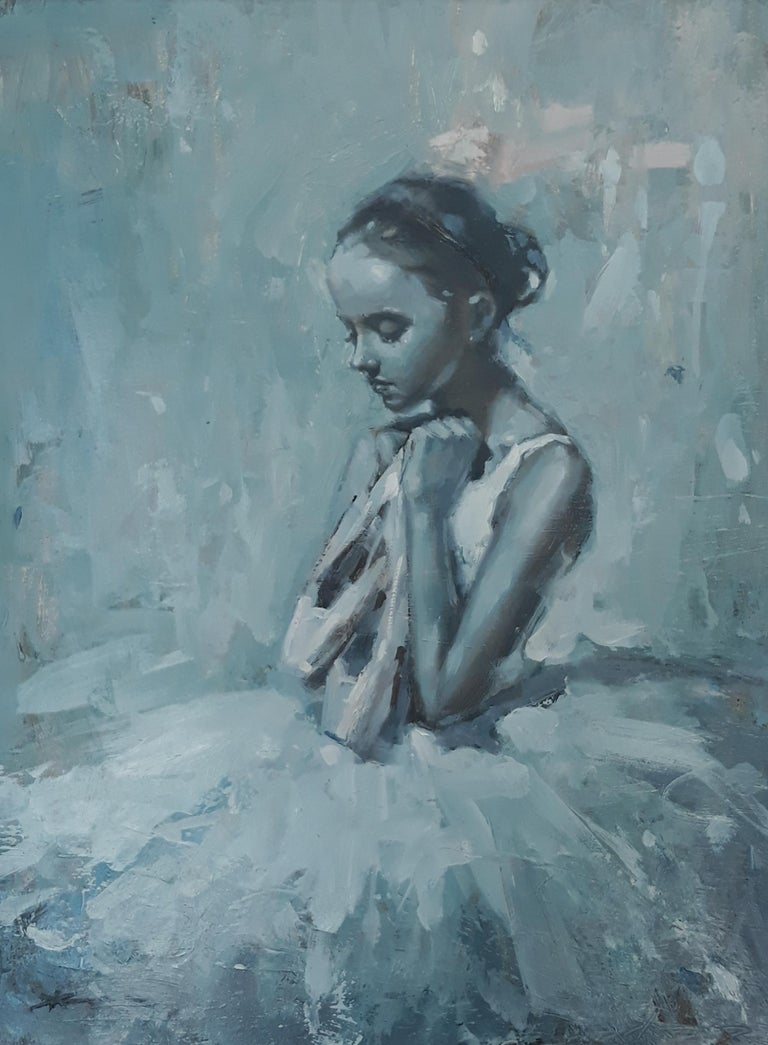The Effect of Figurative Oil Painting on Modern Art and Culture
Wiki Article
The Advancement of Metaphorical Oil Painting: Understanding Its Historical Value and Modern Interpretations
The evolution of metaphorical oil paint acts as a compelling lens whereby to check out the interaction between artistic expression and historic context. From the thorough naturalism of the Renaissance to the stirring power of the Baroque, each era has actually contributed layers of meaning and strategy to this classic medium. Contemporary musicians, attracting from this rich heritage, are now reinterpreting the human number in methods that challenge traditional stories. As we check out these transformations, one have to take into consideration exactly how the dialogue between previous and present informs not only imaginative practice but additionally social representations in an increasingly intricate world.Origins of Figurative Oil Paint
The origins of figurative oil paint can be mapped back to the very early Renaissance in Europe, particularly in the 15th century. The advancement of oil paint permitted for better depth of color and information, boosting the realism and vibrancy of their work.
In this transformative era, numbers were often depicted within contextually rich environments, showcasing not just their physical attributes but also their mental states. Pioneers such as Jan van Eyck and Titian harnessed the tool's versatility, employing layering strategies to attain brightness and structure. This development helped with the portrayal of detailed materials and the subtleties of skin tones, adding to the development of portrait and narrative scenes.
Moreover, the Renaissance emphasis on humanism fostered a gratitude for individualism, which subsequently influenced musicians to create even more relatable and vibrant numbers - figurative oil painting. Therefore, metaphorical oil painting arised as an effective vehicle for narration and emotional involvement, preparing for future artistic motions and styles
Trick Historical Activities
Significant historic movements have actually shaped the advancement of figurative oil paint, each contributing one-of-a-kind viewpoints and strategies that broadened the tool's possibilities. The Renaissance noted a turning point, emphasizing realistic look and the human form, with musicians like Leonardo da Vinci and Michelangelo pressing the boundaries of physiological accuracy and point of view. Following this, the Baroque period brought remarkable contrasts of light and darkness, exemplified by Caravaggio, who instilled religious styles with extreme emotionality.The 19th century introduced Romanticism and Realistic look, where musicians such as Delacroix and Courbet challenged timeless ideals, concentrating on specific expression and everyday life. The arrival of Impressionism further reinvented the tool by emphasizing the impacts of light and shade, leading to a departure from standard depiction.
In the early 20th century, motions like Expressionism and Cubism redefined metaphorical painting through abstraction and the exploration of psychological depth. Each of these motions not just reflected the societal adjustments of their times but likewise prepared for contemporary interpretations. The interaction in between these historic activities has actually created a rich tapestry of styles and approaches, affecting contemporary musicians in their search of recording the human experience on canvas.
Strategies and Products Advancement

Throughout the Baroque period, strategies such as chiaroscuro and sfumato arised, improving the emotional vibration of figurative compositions. Musicians began to explore glazes and impasto, adjusting structure and brightness. By the 19th century, innovations like the usage of pre-mixed paints in tubes changed access, enabling artists to repaint en plein air and capture the short lived results of light.
The 20th century saw the introduction of synthetic pigments and tools, which broadened the palette and modified the uniformity of oil paints. The expedition of new application techniques, such as scheme blades and brushes of varying stiffness, further varied creative expression. Collectively, these innovations reflect the evolving connection in between products, strategies, and the creative vision inherent in metaphorical oil painting.

Contemporary Interpretations
Contemporary analyses of metaphorical oil like this paint reflect a dynamic dialogue in between custom and development, where musicians test developed norms and check out varied styles. This advancement shows up in numerous means, as modern musicians mix classic strategies with modern-day principles, usually addressing social, political, and personal stories.Several practitioners attract inspiration from historic jobs, yet they instill their items with modern viewpoints, using the human type as a lorry for discourse on identification, gender, and culture. Artists increasingly experiment with abstraction, distortion, and combined media, which enables a more comprehensive interpretation of the figure and its context.
Furthermore, using vivid shade schemes and non-traditional compositions often serves to interfere with standard checking out experiences, provoking essential engagement from target markets. This change in focus expands beyond aesthetic appeals; it reflects an expanding understanding of the intricacies of human experience in an interconnected world.
As metaphorical oil painting remains to evolve, it remains an essential medium for discovering the nuances of modern life, symbolizing both a regard for heritage and a commitment to dynamic thought. The outcome is a rich tapestry of expression that reverberates with the complexities of the contemporary human condition.
Effect on Modern Art
The impact of figurative oil paint on modern-day art is profound, as it has consistently inspired a myriad of creative motions and techniques throughout the 20th and 21st centuries. From Expressionism to Surrealism and beyond, the exploration of the human number has actually remained navigate to this website a central style, enabling musicians to share complex emotions and narratives. This focus on metaphorical depiction has actually led to a re-examination of standard methods, causing cutting-edge approaches that blend realism with abstraction.
Furthermore, modern musicians have actually welcomed metaphorical oil paint as a method to resolve social and political issues, utilizing the medium to challenge perceptions of culture, gender, and identification. The resurgence of passion in metaphorical operate in current years shows a hoping for connection in a progressively digital world, where human experience and feeling are extremely important.
In addition, the discussion in between figurative oil painting and modern art appears in the jobs of musicians such as Kehinde Wiley and Jenny Saville, that make use of historical references while instilling their items with contemporary relevance. Inevitably, metaphorical oil paint remains to shape and redefine modern-day creative expression, highlighting its enduring significance in the art globe.
Final Thought
The evolution of figurative oil paint highlights its historical value and versatility across numerous imaginative motions. From the naturalism of the Renaissance to the emotive expressions of the Baroque and the innovative strategies of modernity, this medium has actually continuously transformed. Contemporary analyses show dynamic shades and non-traditional compositions, promoting critical involvement with social and political motifs. Eventually, metaphorical oil painting continues to be a crucial medium for checking out the human experience, resonating greatly in today's electronic landscape.The evolution of figurative oil paint serves as a compelling lens via which to analyze the interaction between creative expression and historic context.Significant historical activities have shaped the advancement of figurative oil paint, each adding unique approaches and strategies that expanded the medium's possibilities.As historic activities formed the trajectory of metaphorical oil painting, the products and strategies employed by artists have likewise undertaken significant changes. figurative oil painting.The effect of metaphorical oil paint on modern-day art is profound, as it has constantly influenced a myriad of creative activities and techniques throughout the 21st and 20th centuries.The evolution of figurative oil painting underscores its historical importance and versatility across different creative motions
Report this wiki page